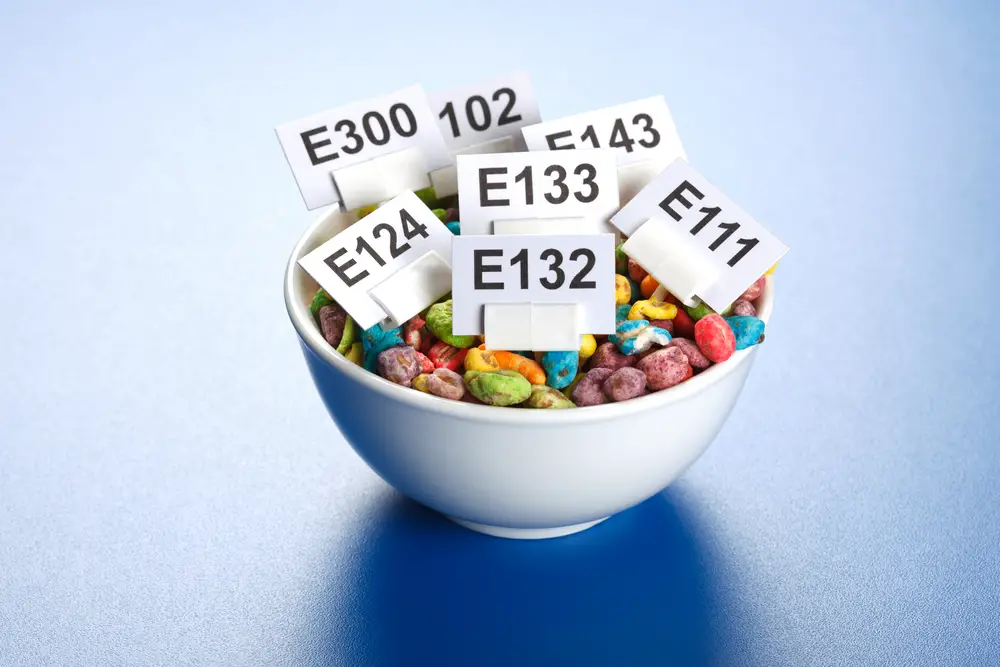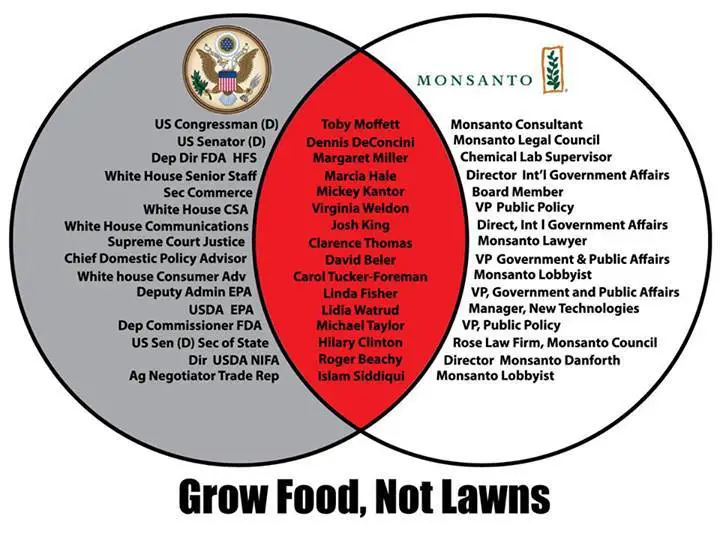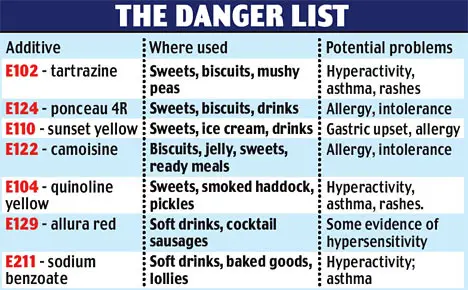By Dr. Dennis Antoine
Guest Writer for Wake Up World
Chemicals are so prevalent in so many foods we put in our bodies, it is no wonder that rates of disease are skyrocketing.
To fully appreciate where we are as a country regarding the most primal of needs – food – we should explore a bit about what has led us to accept the actions of the so-called “protector” of health in the United States, the FDA.
We, as a country are being killed because of greed. The medical establishment told people in the 1930’s, 40’s and 50’s that smoking cigarettes was OK, only to find out that smoking cause cancer. Today, the same holds true with the chemicals that are being put in our water, our food, the clothing we put on our children, that new car smell, and on and on…
The majority of this article will deal with the food issue. So let’s think about the following…
The bee population has been decimated. Without bees, food cannot grow. I just watched 5 beautiful cucumber plants resplendent with flowers wither and drop off the vine, due to a lack of pollination. Research has shown that agricultural chemicals, including RoundUp (Glyphosate), are significantly responsible for this ecological damage, harming the bee’s internal bodily functions including their ability to navigate and thrive. What’s even more alarming is the casual attitude those responsible (including the FDA) have regarding this event, playing down this ecological crisis and suppressing safer agricultural alternatives.
Money has done more harm than we might imagine. When someone comes to a position of authority, greedy villainous folks show up with untold amounts of money, used to sway and influence our elected decision makers to vote in favor of those who stand to profit. Chemical companies, pesticide makers, the folks who make the devices to spread these poisons, all reap huge profits. Not to mention a huge windfall: the health care industry scratching their heads to try and figure out the monstrous problems caused to human health.
Currently, people are often so busy rushing to eat a meal of fast food or chemically laden snack foods, we don’t have time to stop and think what we are putting into our bodies. The chemical ingredients on packaging labels are written so small, and to seemingly comply, the companies use a name so complicated that they need be read by a chemist.
This all serves to keep the public uninformed. After a while, people just ignore them, largely because of confusion. They don’t care if they’re eating carrageen or methyl cellulose, as long as it tastes good! These chemicals as you will learn here, add NO NUTRITIONAL VALUE WHATSOEVER!
How one person could be in charge of allowing such damage to be done to the human race is inconceivable. Yet the following video details in part, who that one individual is.
Conflict of Interests
Michael Taylor is a lawyer who has spent the last few decades moving between roles in Monsanto, and the FDA and USDA. Currently the FDA’s Deputy Commissioner for Foods, and an advocate for GMO “foods”, Taylor also is the former Vice President for Public Policy of Monsanto.
Taylor was pivotal in fighting GMO labelling laws in the United States, for the obvious reason that people will start making healthier decisions! We, as a nation, must prevail.
So the best way to not repeat history is to ensure that we know what went on to allow these actions, and to prevent them from happening again. Like telling people not to smoke. Years ago, docs were saying smoking is ok. Let’s take a look at what was happening way back in the early 60’s.
The following is an excerpt form the book The Poisons in Your Food by William Longgood published in 1960 by Simon and Schuster. At the time the author was exposing the travesty of DDT and how it entered animals bodies and became stored in the fat. Any foods, including the meat, and or drippings used to make gravy, contained these harmful chemicals.
The lawlessness of industry and no one being able to monitor exactly what went on has contributed greatly to the vast number of diseases that have populated our world.
We are now 52 years later and no closer to higher quality food. There remains, poisons in the food and water supply:
“Six years of attempts to change the pure food law finally happened when the the 85th Congress of the US passed an amendment that was signed by President Eisenhower in 1958.”
The law as amended, is primarily a measure designed to accommodate industry and protect profits, rather than consumers.
The immediate benefit that the new law gives the public is that from now on, chemicals must be tested before they can be used in foods. At the same time, it permits in foods the use of poisons that were barred by the former bill, under a tolerance concept similar to that provided by the Miller Pesticide Act. This means that it is now possible for unlimited numbers of poisons to be injected into foods. Instead of hundreds being used, there soon may be thousands.
Under the old law, no harmful substance was supposed to be used in food, but to remove such substances FDA first had to detect them and prove harm. This law, barring the use of all poisons, was known as the “per se rule.” The intent of Congress in 1958 in passing the per se rule was unmistakeable; it wanted to strengthen the food law by eliminating existing loopholes that permitted the use of certain poisons. The only exceptions Congress provided were for poisons that were “necessary” or “unavoidable” in the production of foods – a test that authorities said was met only by the pesticides. All other poisons were illegal per se. But the FDA and some courts refused to enforce this rule, accepting industry’s argument that when poisons were used in small enough amounts they ceased to be poisons. Congress made no provision to permit poisons in foods under such conditions; this was an interpretation to benefit industry, and the FDA held that a new law was necessary so it could control the amount of such substances used. Instead of enforcing the law as it is written, the FDA worked vigorously to change the law to accommodate industry.
The wolf is certainly guarding the henhouse. And we’ll be darned, all the farmers that have had lawsuits against them from Monsanto and having been run out of business, I dedicate this article in part, to you.
The others this article is dedicated to are the unsuspecting victims who have contracted various diseases from chemicals contained in foods that they were unaware of..
The following is another excerpt from The Poisons in Your Food by William Longgood
“Revealing testimony was offered along the lines by Dr Smith during Congressional hearings on the new food law way back in 1958. But as early as 1954 when he was chairman of the Sixth International Cancer Congress at Sao Paulo Brazil he indicted in a speech on cancer control that all was not well in the world of commercial science.
“Delays and obstructions have impeded advances in knowledge of preventable hazards,” he said
“…little progress can be anticipated from termination of studies when potential risks begin to appear. Some of the most active scientists in the field of industrial cancer hazards have had their studies terminated or been obliged to leave their laboratories soon after describing findings that associated hazards with certain products…”
These charges were not spelled out until a Dr. Smith offered explosive testimony, in July 1957, before the House Subcommittee on Health and Science during hearings on the need for a cancer clause in the new law. He laid the groundwork by pointing out the FDA was “well aware” of the cancer problems relating to foods and of resolutions adopted by the International Union Against Cancer and the American Cancer Society to exclude all carcinogens from foods and to test all additives for cancer causing properties. Despite this knowledge he said, the FDA supported legislation that failed to contain and provisions to exclude carcinogens or require cancer tests of additives.
“This failure is not accidental,” he testified. “During the past three years I have corresponded with the FDA about the need for such provisions. I am told that the FDA prepared that bill with the knowledge and approval of food industries, but without consulting with the chairman of the Congressional committee that investigated the use of chemicals in food.”
Let’s see: Clarence Thomas is a former Monsanto attorney. He is now a Supreme Court Justice. Michael Taylor, also an attorney, was a vice president at Monsanto, until he was made head of the FDA by the current administration. If that isn’t a coincidence, I don’t know what is….
The FDA, which is supposed to protect Americans, can do whatever they choose whether or not there are health ramifications on unsuspecting citizens!
Food Additives – What They Don’t Want You to Know!
Food Additives
From: The Encyclopedia of Nutrition and Good Health, Second Edition.
Food additives are substances intentionally added to food products. Food additives are used for a variety of reasons: to make food look more appealing to consumers; to maintain freshness; to make food safer or more nutritious; or to ease food manufacture or processing. Unintentional (incidental) food additives are inadvertently present in foods. They have no planned function in food, but become incorporated during processing, packaging, or storing. There are nearly 3,000 intentional additives. Many are derived directly from foods, like lecithin, a lipid related to fat. Certain additives are needed to prevent spoilage and to maintain freshness of foods that must be distributed to consumers far from the point of manufacture or origin. Paradoxically, scientists’ ability to detect food additives in foods, whether intentional or incidental, exceeds their ability to interpret the results in terms of human health.
The Federal Food, Drug and Cosmetic Act (1938) is the basic food law; it gives the U.S. Food and Drug Administration (FDA) the responsibility for the safety of foods. Three amendments strengthened this act in 1954. The Miller Pesticide Act provided for establishing safe tolerances for pesticides in raw agricultural products. The Food Additives Amendment of 1958 required pre-marketing clearance by the FDA for food additives. It includes the Delaney Clause, which made it illegal to add cancer-causing chemicals to foods. The Color Additive Amendment (1960) regulated the certification of food colors. The FDA legally classified substances added to food into four categories:
1. Food additives
2. Generally recognized as safe (GRAS) substances
3. Prior sanctioned items
4. Food colors.
Hundreds of food additives were classified as GRAS in 1958, based on common experience and apparent safety record. These include sugar, salt, spices, vitamins, minerals, milk, and egg protein. The GRAS list is periodically updated as new safety data are available. Thus cyclamate, sulfites, several food colors and saccharin were removed when their safety was found wanting. Prior sanctioned additives are those agreed on before 1958. Nitrite used as a preservative for processed meat is an example. That a food is prior-sanctioned or that it is on the GRAS list does not assure safety; it must be evaluated in light of more current knowledge and more advanced technology.
Excluding salt, sweeteners, and sugar, the average yearly U.S. consumption of food additives like flavors, preservatives, and colors is 5 to 10 pounds per person. Food additives are used extensively by the food industry to help create a huge variety of processed foods. These manufactured foods tend to have a high level of fat and oil, salt, sugar, preservatives, and artificial coloring, and lower levels of several important nutrients.
Common Functions of Food Additives:
- Anti caking agents are added to powdered or crystalline products to prevent lumping, e.g., silicon dioxide, cornstarch, calcium silicate.
- Antimicrobial agents preserve foods by preventing growth of bacteria, molds, and yeasts, e.g., calcium propionate, sodium benzoate.
- Antioxidants retard deterioration or rancidity and discoloration due to oxidation, e.g., vitamin C (ascorbic acid), vitamin E, BHA, BHT, propyl gallate.
- Curing and pickling agents provide characteristic flavors and increase shelf life, e.g., sodium nitrate, sodium nitrite.
- Emulsifiers establish a uniform dispersion, e.g., lecithin, carrageenan.
- Enzymes can improve food processing, e.g., glucose oxidase, meat tenderizers.
- Flavor enhancers increase original taste without imparting their own flavors, e.g., disodium guanylate, disodium inosinate, hydrolyzed vegetable protein.
- Flavorings impart a taste or aroma to food, e.g., sodium chloride, sucrose, and many artificial flavoring agents.
- Flour treatment agents are bleaching and maturing agents added to flour, e.g., benzoyl peroxide, azodicarbonamide.
- Food colors or color adjuncts are used to enhance a color or impart a color to a food, e.g., canthaxanthin, caramel, FD&C colors (Blue No. 1, Red No. 3, Yellow No. 5, and others), grape skin extract. Certain chemicals can stabilize or fix a food color.
- Humectants absorb water and help keep foods moist, e.g., invert sugar, dextrose, glycerin (glycerol).
- Leavening agents produce carbon dioxide in baked goods, e.g., sodium bicarbonate, yeast.
- Artificial sweeteners have less than 2 percent of the caloric value of sucrose (table sugar) when used at the same level of sweetness. They include saccharin and aspartame.
- Nutrient additives like iron, thiamine, and riboflavin enrich white flour and partially replace some of the nutrients lost in preparing bleached flour. Iodide (the chemical form of iodine) is used to fortify salt.
- Nutritive sweeteners include sucrose, dextrose, corn syrup, and high fructose corn syrup.
- Many pH control agents change or maintain the acidity or alkalinity of a food. These include acids, bases, and buffers like dihydrogen phosphate, acetic acid, phosphoric acid, and citric acid.
- Processing aids include clarifying agents, clouding agents, and crystallization inhibitors. Filter aids are used to clarify beer, for example.
- Propellants are used to expel a product. Carbon dioxide and other gases have replaced chlorofluorocarbons in foams and aerosols.
- Sequestrants combine with metal ions to form complexes. This action improves product stability, e.g., citric acid, ethylenediaminetetraacetic acid (EDTA).
- Thickeners produce viscous solutions while stabilizers form stable suspensions (emulsions). They impart “body” to foods or beverages, e.g., carob bean gum, agar, and alginates, as found in salad dressing, whipped cream, cheese, pudding, and frozen desserts.
- Surface finishes increase palatability, preserve gloss and inhibit food discoloration, e.g., polishes, waxes, and glazes.
- Texturizers alter the appearance and “mouth feel” of food; e.g., pectins, gum ghatti, and gum arabic.
Food Safety
The most questionable additives are artificial food colors because they may cause cancer and/or allergic reactions and their use is strictly cosmetic. Consumer advocates claim they could be eliminated without altering the nutritional value of the food. Other food additives are potentially harmful; for example, sodium nitrite, a preservative, can be converted to a class of compounds (in the stomach and intestine) that cause cancer. Saccharin, an artificial sweetener, also causes cancer in lab animals. Its use has been continued through congressional action, though saccharin-containing food must bear a warning label.
Nutritive sweeteners like sugar (sucrose) and salt are by far the most common food additives. Sweeteners represent empty calories because they do not supply minerals, vitamins, protein, or fiber. Americans eat 28 billion pounds of sweeteners each year; the yearly per capita consumption is 130 to 150 pounds. There is consensus that excessive sugar consumption contributes to tooth decay and to obesity, now considered a leading disease in the U.S. Salt (sodium) is often added to processed foods because they lack flavor. The yearly U.S. consumption of salt per person is 10 to 15 pounds. A high-sodium diet contributes to high blood pressure in some people, who have an increased risk of dying from heart disease. There is no easy way to identify those who are sensitive to sodium ahead of time.
What Can We Do?
Today, the FDA is a vast organization of fifteen offices, including the Office of Regulatory Affairs, the National Center for Toxicological Research, the Center for Biologics Evaluation and Research, the Center for Devices and Radiological Health, the Center for Food Safety and Applied Nutrition, and the Center for Veterinary Medicine. The administration has nine thousand employees, who monitor and process $1 trillion worth of products each year. Obviously, the FDA has grown tremendously since its inception in the Bureau of Chemistry.
- You can make a difference by writing to your congressman and senators asking for their interest and involvement in protecting Americans.
- Read labels. Become aware. Many of us enjoy sports, television, movies, the internet. Don’t become so hypnotized that you forget to pay attention to what goes into your body.
- Pointing fingers at a party affiliation is useless. They are all wrong for letting this happen. We, as a country, must take back what has been snatched away by the greedy few. Color, religion, age-we are all in this together and we need to do things that bring us together, not drive us apart because of political ideaology. Everyone deserves to eat quality food and to make their own choices
George Carlin – The Best 3 Minutes of His Career – “The American Dream”
Your vote can make a difference. Your opinion matters, and if you are a California resident, by all means, make Proposition 37 a priority to vote on and tell those you care about to be aware of this. You will undoubtedly be blasted in the next week with commercials by the major corporations to knock this critical vote down. What happens in California happens across the country. Proposition 37 must pass!
Previous articles by Dr. Dennis Antoine:
- The Biggest Moneymaker of all Time: Cancer, and Why the Profiteers Don’t Want a Cure
- A Subject That Has Been Milked for Decades – Carpal Tunnel Syndrome
About the author:
 Dr. Dennis Antoine graduated New York Chiropractic College in 1983. He opened his office in Ft Lauderdale to treat patients with chiropractic care and nutritional guidance, and started Prevention@Work which focused on helping industry reduce injuries in the workplace. Using ergonomics, or the study of a person in the workplace, he assisted large companies in south Florida reduce their injuries, thereby helping companies save millions of dollars in health care costs. He has been a contributing editor for the Florida Sun Sentinel, The South Florida Business Journal, and ACA Journal of Chiropractic. He has also been a presenter for the American Chiropractic Association, the Florida Dairy Products Association, and Prevention Magazine. He now helps other doctors market their practices, and get the word out about options and alternatives that are safe and effective in the treatment of musculoskeletal conditions.
Dr. Dennis Antoine graduated New York Chiropractic College in 1983. He opened his office in Ft Lauderdale to treat patients with chiropractic care and nutritional guidance, and started Prevention@Work which focused on helping industry reduce injuries in the workplace. Using ergonomics, or the study of a person in the workplace, he assisted large companies in south Florida reduce their injuries, thereby helping companies save millions of dollars in health care costs. He has been a contributing editor for the Florida Sun Sentinel, The South Florida Business Journal, and ACA Journal of Chiropractic. He has also been a presenter for the American Chiropractic Association, the Florida Dairy Products Association, and Prevention Magazine. He now helps other doctors market their practices, and get the word out about options and alternatives that are safe and effective in the treatment of musculoskeletal conditions.
Disclaimer: This article is not intended to provide medical advice, diagnosis or treatment.

If you've ever found value in our articles, we'd greatly appreciate your support by purchasing Mindful Meditation Techniques for Kids - A Practical Guide for Adults to Empower Kids with the Gift of Inner Peace and Resilience for Life.
In the spirit of mindfulness, we encourage you to choose the paperback version. Delve into its pages away from screen glare and notifications, allowing yourself to fully immerse in the transformative practices within. The physical book enriches the learning process and serves as a tangible commitment to mindfulness, easily shared among family and friends.
Over the past few years, Wake Up World has faced significant online censorship, impacting our financial ability to stay online. Instead of soliciting donations, we're exploring win-win solutions with our readers to remain financially viable. Moving into book publishing, we hope to secure ongoing funds to continue our mission. With over 8,500 articles published in the past 13 years, we are committed to keeping our content free and accessible to everyone, without resorting to a paywall.









